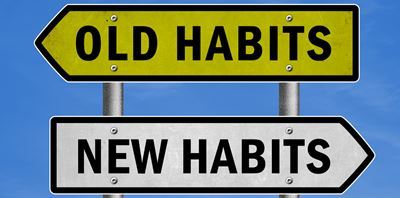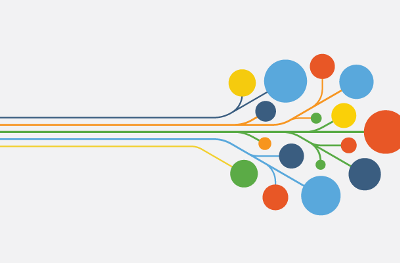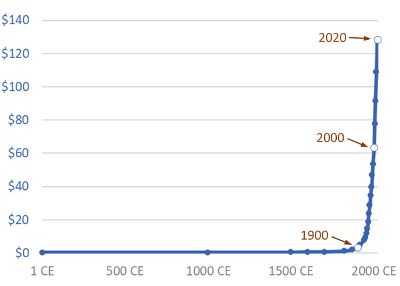Jeremie Averous's Blog, page 9
September 14, 2021
How Stories Change Cultures
In this interesting post ‘The Connection Between Narrative and Culture‘, Valeria Maltoni addresses how cultures change. Cultures being often defined by narratives (like popular stories), they are at the center of cultural change too.

“Culture develops over larger time horizons. It’s a reflection of a society’s or group orientation. Like the market, collective attention determines what people carry forward. Hence the prevailing narratives. Some see change as the result of influence by a group of outsiders. […] I have another theory of change […] It does start with a story. But the story has to reflect the reality to draw from it. Not just be utopia.“
I find this approach interesting. In a world where stories are constantly created over social networks, the emergence of strong collective stories may be what changes cultures. It requires diversity, infusion of new ideas, and this creates stories and memes. At the end of the day, it makes cultures evolve.
The idea that cultures are defined by collective stories and evolve through stories is quite strong. And quite actionnable.
The post How Stories Change Cultures first appeared on The Fourth Revolution Blog.
September 12, 2021
How to Create Habits Effectively
This interesting article ‘Strategies for creating (or destroying) habits‘ summarizes principles of habits change management and provides an applicable four-pronged model: cue, craving, routine, reward.

In more detail:
How can I make it obvious? (Cue)How can I make it attractive? (Craving)How can I make it easy? (Response, Routine)How can I make it satisfying? (Reward)The first step is to make our current habit conscious and visible, and understand how it gets triggered. The second step is to make the new habit particularly attractive by associating it with an expected outcome; in that area, benefitting from the right environment and social pressure is clearly an advantage. The third step is to ensure that is easy to trigger the new habit; and finally the fourth step is to reward the new behaviors.
Worth remembering that changing habits (once we are aware of the need) can be enhanced by a structured approach. It is worth reviewing it from time to time as we all have habits to change.
The post How to Create Habits Effectively first appeared on The Fourth Revolution Blog.
September 11, 2021
How We Hold to the Past Too Much In Creative Endeavors
Seth Godin in this post ‘Sunk costs, creativity and your Practice‘ provides a need reflection on the fact that creative endeavors entail leaving behind things we have invested in learning in the past – in effect, overcoming the sunk cost syndrome.

“We hold on to the old competencies and our hard-earned status roles far longer than we should. The only way to be creative is to do something new, and the path to something new requires leaving something else behind.”
Moreover, Seth Godin insists that this capability of leaving stuff behind that we have invested in learning or practicing is an actual capability in itself, that should be practiced regularly for the creative person.
I do believe that what we have made the effort to learn in the past will never be lost and will be useful in hindsight, but that we certainly should not be burdened by it when we start something new. This is not easy and certainly requires a lot of experience and thoughts.
Creativity requires overcoming what we know to produce something new to the world, and therefore requires overcoming the sunk cost syndrome as a matter of habit. Let’s practice!
The post How We Hold to the Past Too Much In Creative Endeavors first appeared on The Fourth Revolution Blog.
September 9, 2021
How Emotional Work is Key to Manage One’s Own Misalignments
This post by Steve Pavlina ‘Aligned Solutions‘ provides interesting insights on how to manage own misalignments – like for example those between our aspirations, dreams, thoughts, choices…. Importantly, this requires working at emotional level and not at analytical level.

We all have some misalignments that create themselves and that we have to manage; and we also need to make sure they do not become so significant as to become hazardous, because if we have too much misalignments we may suffer in day-to-day situations when it comes to making choices.
The issue is how to deal with them to attain genuine alignment of our own self so as to attain the lightness and resolution that comes with better alignment.
“I’d say that the heart is really the key to alignment. My biggest alignment mistakes happened when I tried to use my brain to go against my feelings. If my feelings aren’t aligned with what I’m trying to do, that kills my plans dead. Doing anything interesting in life requires sustainable motivation. So figuring out what gives you the most sustainable motivational juice can point you in the direction of increasing alignment too.” Therefore, the important point here is to able to distinguish at the emotional level in what direction we ought to go.
In addition, Steve Pavlina points out the need for discipline and motivation once we have decided on a new direction. Having an emotional commitment clearly helps.
Improving our own alignement is essential for our balance and our freedom; and this can only be addressed by undergoing emotional work.
The post How Emotional Work is Key to Manage One’s Own Misalignments first appeared on The Fourth Revolution Blog.
September 7, 2021
How Human Augmentation Becomes Imperative for Defense
This interesting article ‘Space Force scientist warns it’s ‘imperative’ the US military experiment with human augmentation and AI to stay ahead of Russia and China‘ expose how military competition leads into human augmentation. And what happens in the military will undoubtedly spread later in civilian usage.

“[this Space Force scientist] announced we are entering the age of ‘human augmentation,’ which is crucial to the US’s national defense in order to not ‘fall behind our strategic competitors.‘
It proposes in particular to use self-learning algorithms to develop innovative strategies (such as AlphaGo algorithm that has self-taucht how to play go). This would lead to a battlefield combining human and IA agents (including probably drones). Therefore, human agents will need to be augmented to be able to fully work together with AI and fully participate in the battlefield.
This development was expected but we can now anticipate that it may go faster due to increased competition in the arms race between nations.
The challenge I believe will be to effectively combine the virtual battlefield with the real battlefield conditions: in effect the twin battlefield will have to reflect actual conditions on the ground and this will certainly be a major challenge in the years to come.
The post How Human Augmentation Becomes Imperative for Defense first appeared on The Fourth Revolution Blog.
September 4, 2021
How Copyright Trolls Now Spread to Modern Creative Common Licenses
This excellent article ‘Beware the Copyleft Trolls‘ explains how certain organisations are now suing systematically material used under modern Creative Common licenses.

Creative Commons licenses are a new approach to copyrights that provide lighter protection and usage rights. They have developed with the development of collaborative approaches on the internet, where images, sounds and other resources are shared widely. They are not free-for-all licenses, however they do allow a lot of non-commercial usage of material.
Still, some organisations seem to sue abusively users of material under those licenses, as soon as some conditions are not strictly followed such as attribution etc.
“Verch’s scam is a profitable one. He posts stock photography he savvily generates to meet market demand, such as images of “face coverings, test tubes and people wearing masks” that he put on his website at the start of the COVID-19 outbreak in 2020. Then, he waits for someone to slip up on the CC-BY-2.0 attribution. And he pounces.”
This is the behavior of trolls (other exist in the field of patent law – see for example our older post ‘Patent trolls and the end of conventional intellectual property‘ ) and judges seem to be reluctant to follow suit, however this creates a lot of disturbances.
Another proof that even when one tries to develop a benevolent and collaborative approach, some trolls do try to take advantage of the situation. Therefore one should be careful however I am certain society and law will act to make sure this remains marginal and the general intent of collaboration remains.
The post How Copyright Trolls Now Spread to Modern Creative Common Licenses first appeared on The Fourth Revolution Blog.
September 2, 2021
How Economic Growth Definitely Reduces Poverty
The site ourworldindata.org is always an excellent reference about worldwide statistics, and their page on economic growth is particularly instructive. The historical perspective is quite instructive.

Global economic wealth production is quite exponential when looked upon a long time frame, since the Agricultural Age through the Industrial Age. Lately, it has spread to many more countries and people, sustaining this exponential growth.
GDP per capita follows the same exponential growth, particularly in developed countries, but also – albeit at a lesser level – in developing countries.
As the page shows, conversely, extreme poverty has been decreasing significantly in the recent decades globally, which is excellent news (even more taking into account the significant growth in world population) – going down from a historical 75% of world population down to less than 10%.
Hence economic growth is definitely a major component of human well-being. Solutions to the current climate crisis should take it into account, looking at means to pursue growth – in a more sustainable manner – so as to continue raising the well-being of more people.
The post How Economic Growth Definitely Reduces Poverty first appeared on The Fourth Revolution Blog.
August 31, 2021
How Long Lasting Internet Memory Can Be
In this Wired article ‘I Called Off My Wedding. The Internet Will Never Forget‘ we get reminded how internet can maintain memories of past events (even if they did not really happen at the end). And how this will impact the choices provided today by internet services.

“Of the thousands of memories I have stored on my devices—and in the cloud now—most are cloudless reminders of happier times. But some are painful, and when algorithms surface these images, my sense of time and place becomes warped. It’s been especially pronounced this year, for obvious and overlapping reasons. In order to move forward in a pandemic, most of us were supposed to go almost nowhere. Time became shapeless. And that turned us into sitting ducks for technology.”
Facebook memories, or advertisements for stuff we consumed years ago (I still see on my screens adverts for camper vans in New Zealand where we vacationed years ago…) are reminders that internet does not forget anything. And through AI those memories may emerge in the weirdest ways.
On the opposite, curiously, everything which happened before the advent of social networks (2005-2010 approximatively) does not exist in Internet memory, which creates a substantial gap.
The only exit from this situation is to delete it all, but that may not even be possible. We have to live knowing that the internet has in memory everything we posted and wrote all those years – and that some may come back to haunt us one day.
The post How Long Lasting Internet Memory Can Be first appeared on The Fourth Revolution Blog.
August 28, 2021
How to Deal with the Challenge of Regulating GAFA Algorithm Updates
Valeria Maltoni in her post ‘Social Media Bubbles‘ reminds us that “Social media algorithms determine what you see when you search and scroll the platforms. Not your friends.” Therefore, we at the mercy of an algorithm update. Hence the idea by some governments to regulate those updates.

We all know that Google or Facebook algorithm updates create substantial disruptions in the way search results or screen results are displayed, creating considerable dismay to all those that depend on this natural or paid advertising for their enterprise. It also funds a coterie of search gurus and naturally increases GAFA revenues as people finally end up paying to get better visibility.
The Australian government has been particularly at the forefront of trying to regulate the GAFA. “If the bill passes in one form or another, which seems likely, the digital platforms will have to give the media 14 days’ notice of deliberate algorithm changes that significantly affect their businesses. Even that, some critics argue, is not enough for Big Tech.”
It is interesting to recognize that this shows that GAFA are increasingly seen as a sort of public service with real-life implications on the life of people and companies. Of course this is a bit contradictory with the commercial nature of those companies.
This tension between public service and the nature of the GAFA as commercial enterprises will only increase in the coming years as we become increasingly dependent on their services.
The post How to Deal with the Challenge of Regulating GAFA Algorithm Updates first appeared on The Fourth Revolution Blog.
August 26, 2021
How To Improve National Infrastructure Protection Against Hacking
This interesting post ‘The Colonial Pipeline ransomware attack and the SolarWinds hack were all but inevitable – why national cyber defense is a ‘wicked’ problem‘ shows how difficult it can be to protect national infrastructure against hacking, in particular in a context of globalization of IT outsourcing.

One of the important observations from the post is the realization that security threats are created through widespread subcontracting of IT work to external parties, often in developing or emerging nations. For example “SolarWinds, driven by its growth strategy and plans to spin off its managed service provider business in 2021, bears much of the responsibility for the damage, according to cybersecurity experts. I believe that the company put itself at risk by outsourcing its software development to Eastern Europe, including a company in Belarus. Russian operatives have been known to use companies in former Soviet satellite countries to insert malware into software supply chains.”
In addition, national agencies in charge of defending essential infrastructure are not always coordinated or integrated, and it is extremely difficult to check out all the various services used to manage IT infrastructure.
Resilience to hacking requires solving an issue in a complex situation, and this requires novel approaches are that more systemic than the ones applied currently. Moreover it is important to increase infrastructure resilience to events which may be up to some level unavoidable.
The post How To Improve National Infrastructure Protection Against Hacking first appeared on The Fourth Revolution Blog.



